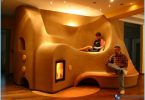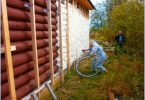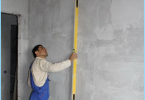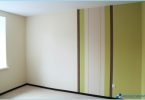The contents
One of the most easy and affordable ways of construction of internal partitions in the house is the construction of partitions from foam blocks. By using this material it is possible to work not only in new buildings but also in homes that are already operating.
The advantages of foam blocks ↑
Foam concrete blocks are considered to be one of the most suitable construction materials in those cases when required construction of internal structures. This contributes to a number of reasons:
- First and foremost, for concrete blocks is characterized by ease in handling. This material is easily cut, sawed, breaks nails, strugala etc.
- Due to the ease in the treatment you receive a opportunity to save significant time in installation.
- On the surface of the foam, due to its special structure, can carry out almost any finish.
- It is also worth noting the high level of acoustic insulation qualities, helping to protect the premises from noise and even a thin interior wall. For example, if interior partitions are made of foam with a density of 1000 kg/mThree, the index of noise insulation will be of the order of 40 dB, which fully meets all the requirements of SNiP.
- Foam blocks are great at keeping you warm, thereby maintaining a comfortable microclimate for the person.
- The foam material, designed for use in office and industrial premises, as it is characterized by a high level of durability. Foam is resistant to aggressive chemicals, moisture, UV rays and sudden temperature changes.
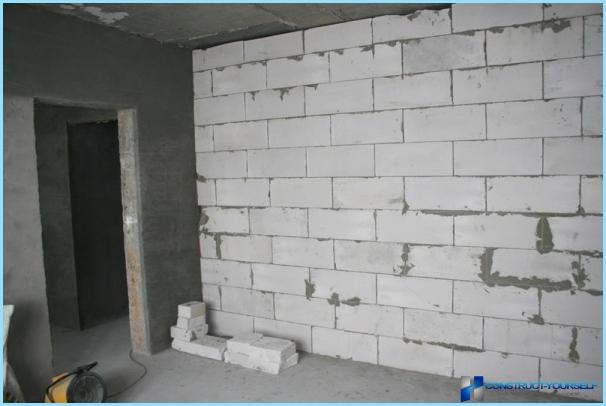
Along with this, the foam, as well as any other building material, has its shortcomings. Perhaps the most significant of them is poor geometry of the blocks, because of what their use is in mass construction is very problematic. The reason for this is that such concrete blocks are manufactured not only large companies but also small firms is not too high quality products.
How to choose foam blocks for the construction of internal partitions ↑
Choosing foam concrete blocks, you first need to pay attention to the way they were made. Production method can be autoclaved and non-autoclaved. In that case, if the material was manufactured in a non-production, he may have an uneven porous structure and, as a consequence, low quality. Such blocks are characterized by shrinkage in the process of operation, reaching to 2-3 mm. for each meter of height of the partition. The foam blocks, made in autoclave production, this indicator is lower by about 10 times (even if both material have the same density). Such interior partitions from foam blocks have a high strength.
Another important criterion that you should pay attention to is the identity of the width of the blocks (the gaps between them must be completely absent). The foam blocks should have uniform structure and smooth bubbles, whose diameter should be no more than 1 mm.
When selling foam blocks should be carefully covered with foil, which allows to maintain the humidity of the material at the appropriate level. In that case, if the unit is Packed incorrectly, it can crack and therefore lose their original strength. Also worth a closer look to the color of the foam blocks, which must be homogeneous and without any modulations.
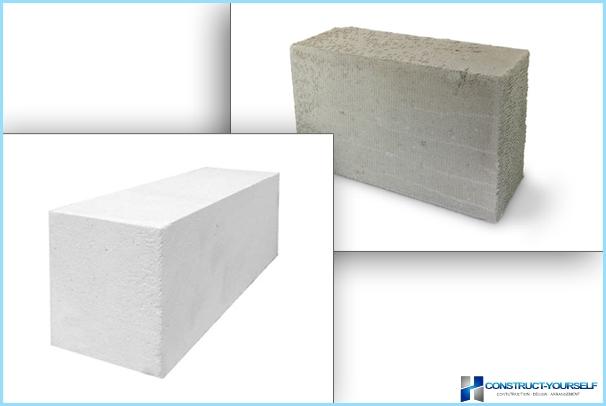
The size of the blocks ↑
During construction work uses blocks of different sizes, depending on the requirements and wishes of the customer. The thickness of the foam blocks is one of the most important variables responsible for the level of thermal insulation and bearing capacity of the future wall.
The size of the blocks of foam are usually equal to 600 mm in length, 300 mm in height and 200 mm in thickness (the dimensions of the concrete blocks for walls is 100 mm). Block length is determined by the specifics of the molding material in the workplace. Regardless of the technology used in the production of concrete blocks, the basic box shape-snap has a length of 600 mm. After cutting of the array, the upper part of the block becomes its lateral end.
Due to the cutting of production technology it is possible to obtain blocks of different sizes. A fixed point will only have unit length, since this parameter is regulated by GOST 21520-89. Due to the small weight of material block foam size 600х300х200мм does not exceed 25 pounds, which greatly facilitates the loading and masonry work. For comparison, a block of the same size from sand concrete reaches a weight of 85 pounds.
How to make a partition from foam blocks ↑
Materials:
- trim valves;
- tile adhesive or cement-sand mixture;
- mesh reinforcement;
- the foam blocks;
- steel rods;
- betacarotene (primer for concrete, consisting of an acryl-styrene).
Order of work:
- The first step is to mark the place where will be located the partition (for example, using a profile or a bar).
- Then, in the load-bearing walls gently score the steel bars with the expectation of approximately every 2-3 rows, performing the same floor for greater reliability (if desired, you can apply other types of fasteners, whether it be pins, screws, dowels, etc.). You need to ensure that the rod the other end was part of a horizontal seam masonry.
- Then on the tense cord or fishing line placed the first row pre-moistened with water blocks «brick» or vrazbezhku. Gender in this case must be clean, dry and primed. All seams are carefully filled with cement-sand mortar in such a way as to leave no voids.
- The first three rows of reinforced packing mesh, or single terminals (instead, you can use fiberglass mesh. Then reinforced every two rows and the last two rows. In addition, mandatory reinforced doorway or placed I-beam.
- At a distance of approximately one centimeter from the ceiling leaving a gap that is subsequently filled with foam.
- Finally, the resulting wall is carefully primed, that will simplify the process of plaster.
For folding the walls of the foam are suitable a few ways of joining blocks with the outer wall:
- The installation of the partition blocks to the full depth of the block outer wall.
- Installing with touch, in which wall blocks are not connected to each other.
- Installation of partition blocks in the block outer wall to a depth of 150 mm., with shearing matching outdoor units.
To enhance the stability of the walls, in the outer wall to wall it is recommended that 300 mm of the length of the anchor, when calculating at least three pieces to the height of one floor to wall should be about half its length.
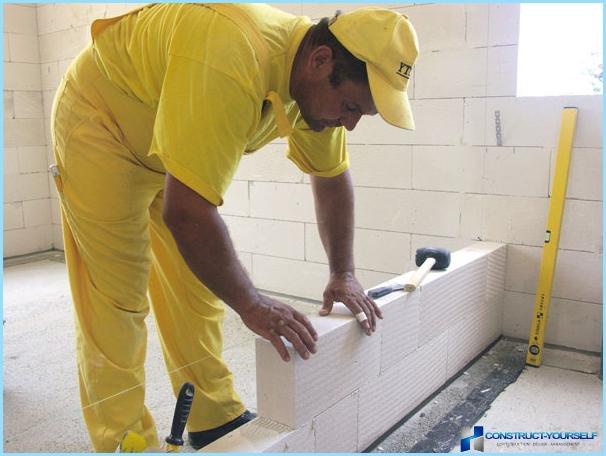
Finish interior walls of the foam ↑
After installation partition from foam blocks needs final finishing. For this ground it thoroughly in several layers and, after drying the material, neatly plastered.
If desired, the partition can oblitsevat tiles. In this case you should follow the order that was observed the thickness of the blocks, and the masonry was executed as accurately as possible. This allows you to lay out the tiles on the surface of the material without any additional work on alignment.

